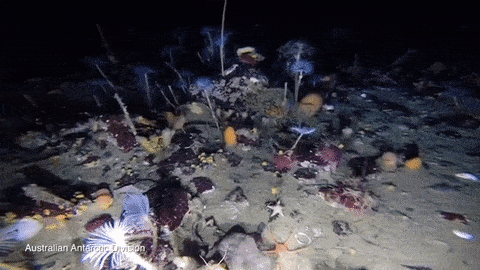Antarctica and its frozen bays are desolate wastelands, but beneath the icy waters there lies a whole new world, as a team of Australian scientists showed to the world.
The researchers sent an autonomous submersible under the sea at O’Brien Bay to retrieve a data logger used to record the water’s salinity, acidity, temperature and such. When they examined the footage beamed back, everyone was dumbstruck by the variety and beauty of the ecosystem there.
“When you think of the Antarctic coastal marine environment, the iconic species such as penguins, seals and whales usually steal the show,” says Glenn Johnstone, an Australian Antarctic Division biologist.
“This footage reveals a habitat that is productive, colourful, dynamic and full of a wide variety of biodiversity, including sponges, sea spiders, urchins, sea cucumbers and sea stars.”
On second thought, it’s not surprising to find a thriving environment beneath the seas around Antarctica, despite the nerve-wracking freezing temperatures above the water. In fact, the extreme temperature ensures O’Brien Bay is covered in a thick, insulating layer of ice that’s stable all year-round. Beneath it, the water’s temperature hovers at a low, but constant -1.5 degrees Celsius (29.3 F).
https://www.youtube.com/watch?v=kxwT1tLMYdw
The Australian Antarctic Program is tasked with empirically determining the impact of ocean acidification on the Southern Ocean. It’s thought more than 25 percent of all the carbon dioxide mankind emits eventually winds up in the ocean, which acts like a huge carbon sink. In the process, however, the water becomes more acidic with dire consequences for marine wildlife and ecosystems.










